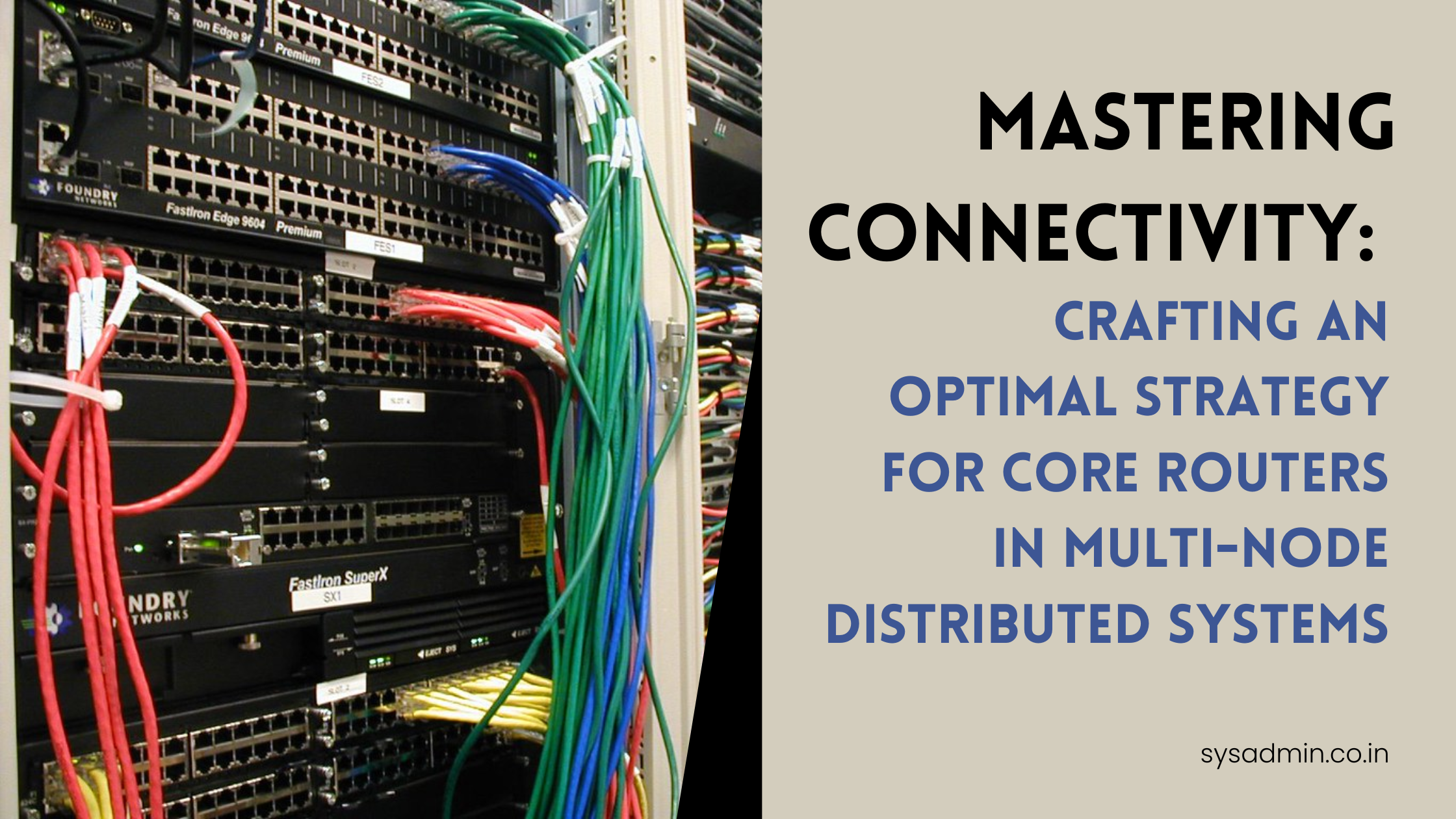In a distributed system with multiple nodes, leveraging core routers becomes crucial for efficient communication, load balancing, and maintaining overall system reliability.
Here’s a strategic approach for utilizing core routers in such a scenario:
Centralized Routing Control:
Implement a centralized routing control mechanism facilitated by core routers. This ensures a unified point of control for routing decisions, allowing for consistent management of traffic across the distributed nodes.
Centralized control enables efficient load balancing, optimal path selection, and easier implementation of global policies.
Intelligent Load Balancing:
Core routers can distribute incoming traffic intelligently among the distributed nodes, preventing any single node from being overwhelmed. Load balancing algorithms within the core routers should consider factors like node capacity, current load, and response times.
This ensures efficient resource utilization and prevents bottlenecks in the system.
Dynamic Routing Protocols:
Utilize dynamic routing protocols within the core routers to adapt to changes in the network topology. These protocols enable automatic updates of routing tables based on real-time information, ensuring that traffic is directed through the most efficient paths.
Protocols like OSPF (Open Shortest Path First) or BGP (Border Gateway Protocol) are commonly employed in such scenarios.
Fault Tolerance and Redundancy:
Implement redundancy strategies using core routers to ensure fault tolerance in the distributed system. Redundant core routers can automatically take over if one fails, preventing disruptions to communication between nodes.
This enhances the overall reliability of the distributed system.
Quality of Service (QoS) Management:
Employ core routers to manage Quality of Service parameters, prioritizing critical communication within the distributed system.
QoS mechanisms can ensure that time-sensitive tasks receive the necessary bandwidth and are processed with minimal latency, contributing to the optimal performance of the entire system.
Scalability Considerations:
Design the core router infrastructure with scalability in mind. As the distributed system grows, the core routers should seamlessly accommodate an increasing number of nodes and higher data volumes. Scalability ensures that the network can handle the evolving demands of the distributed environment.
Network Monitoring and Analytics:
Incorporate robust monitoring and analytics features in the core routers to gather insights into network performance. Real-time data and analytics can help identify potential issues, track trends, and optimize the overall health of the distributed system.
Security Measures:
Implement security measures at the core router level to protect communication within the distributed system. This includes encryption, authentication, and authorization mechanisms to safeguard data as it traverses the network.
Collaboration with Edge Routers:
Collaborate with edge routers to optimize communication between the distributed nodes and external networks. Core routers can serve as the intermediaries that efficiently manage traffic entering and leaving the distributed system.
In summary, the strategic use of core routers in a distributed system involves centralizing control, intelligently balancing loads, adapting to dynamic changes, ensuring fault tolerance, managing quality of service, considering scalability, implementing robust monitoring, and incorporating security measures. This comprehensive approach contributes to the seamless operation and optimal performance of the distributed system.
